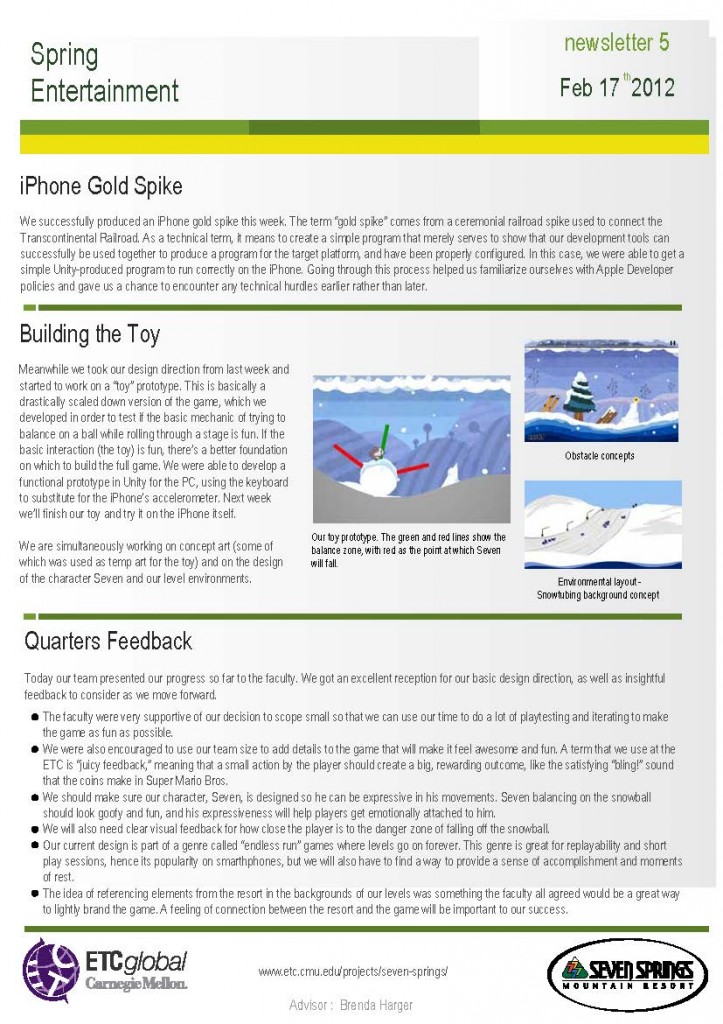Newsletter #5
iPhone Gold Spike
We successfully produced an iPhone gold spike this week. The term “gold spike” comes from a ceremonial railroad spike used to connect the Transcontinental Railroad. As a technical term, it means to create a simple program that merely serves to show that our development tools can successfully be used together to produce a program for the target platform, and have been properly configured. In this case, we were able to get a simple Unity-produced program to run correctly on the iPhone. Going through this process helped us familiarize ourselves with Apple Developer policies and gave us a chance to encounter any technical hurdles earlier rather than later.
Building the Toy
Meanwhile we took our design direction from last week and started to work on a “toy” prototype. This is basically a drastically scaled down version of the game, which we developed in order to test if the basic mechanic of trying to balance on a ball while rolling through a stage is fun. If the basic interaction (the toy) is fun, there’s a better foundation on which to build the full game. We were able to develop a functional prototype in Unity for the PC, using the keyboard to substitute for the iPhone’s accelerometer. Next week we’ll finish our toy and try it on the iPhone itself.
We are simultaneously working on concept art (some of which was used as temp art for the toy) and on the design of the character Seven and our level environments.
Quarters Feedback
Today our team presented our progress so far to the faculty. We got an excellent reception for our basic design direction, as well as insightful feedback to consider as we move forward.
- The faculty were very supportive of our decision to scope small so that we can use our time to do a lot of playtesting and iterating to make the game as fun as possible.
- We were also encouraged to use our team size to add details to the game that will make it feel awesome and fun. A term that we use at the ETC is “juicy feedback,” meaning that a small action by the player should create a big, rewarding outcome, like the satisfying “bling!” sound that the coins make in Super Mario Bros.
- We should make sure our character, Seven, is designed so he can be expressive in his movements. Seven balancing on the snowball should look goofy and fun, and his expressiveness will help players get emotionally attached to him.
- We will also need clear visual feedback for how close the player is to the danger zone of falling off the snowball.
- Our current design is part of a genre called “endless run” games where levels go on forever. This genre is great for replayability and short play sessions, hence its popularity on smarthphones, but we will also have to find a way to provide a sense of accomplishment and moments of rest.
- The idea of referencing elements from the resort in the backgrounds of our levels was something the faculty all agreed would be a great way to lightly brand the game. A feeling of connection between the resort and the game will be important to our success.

